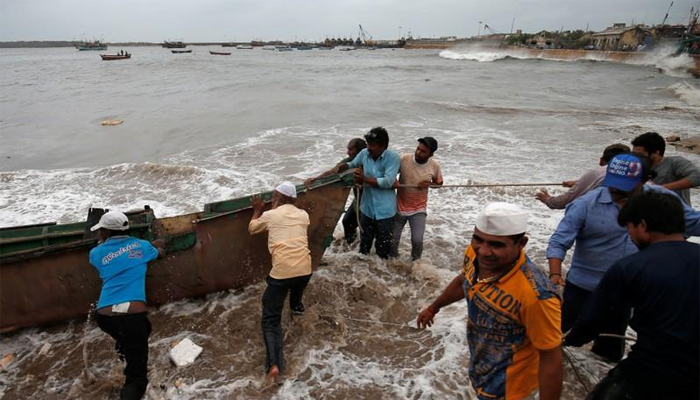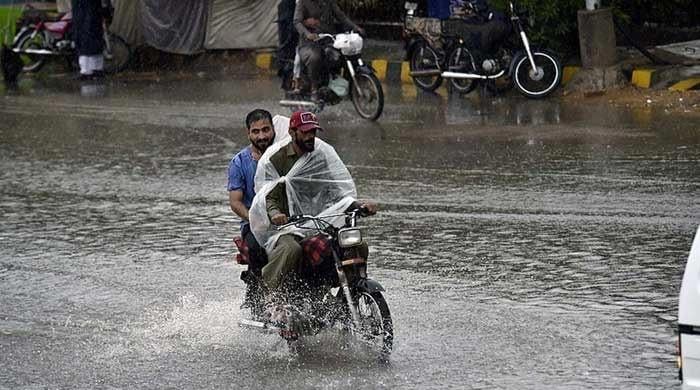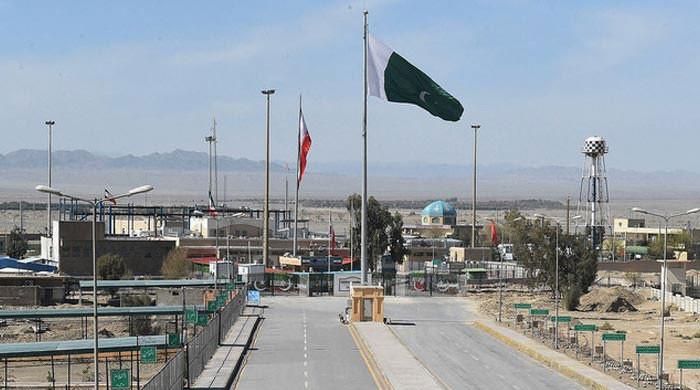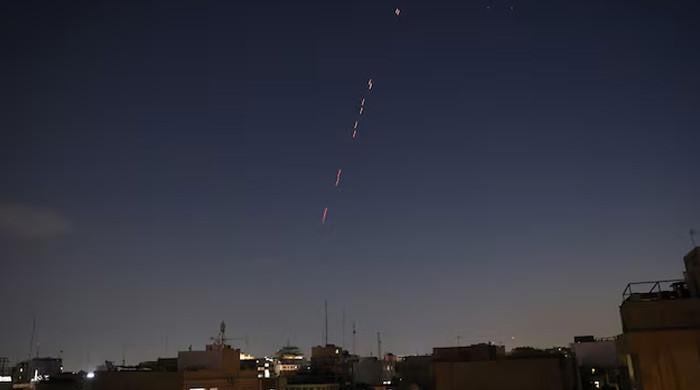'Kyarr' transforms into super cyclone, likely to lash Sindh with rain, sandstorm
Kyarr is the strongest cyclone in the Arabian Sea's history, according to some experts
October 27, 2019

KARACHI: Tropical storm 'Kyarr' in the Arabian Sea has transformed into a super cyclone of Category 5 intensity, the Pakistan Meteorological Department (PMD) said Sunday, adding that it was now likely to lash various coastal areas of Sindh with sandstorm and rain, with lightning over the next two days.
Cyclone Kyarr — at least 860 kilometres away from Karachi as of reporting time — was expected to bring in sandstorms and light downpour, coupled with lightning, in lower towns of Sindh and the PMD, consequently, has warned fisherfolk to stay away from deep waters.
According to some experts, the cyclone is the strongest sea-storm in the Arabian Sea's history. Regardless, it does not pose any direct risk to Pakistan's coastal areas but its impact would be felt in the country's southern regions and as far as Makran.
Cyclone Kyarr is moving in west and north-west direction from the Arabian Sea's central east — where it currently is. In the eye of the storm, winds as strong as 210-220 kilometres per hour have been recorded.
Also read: Cyclone Kyarr unlikely to hit provincial capital but rain expected
The sea-storm has ramped up unusual intensity in the past 15 hours, with weather experts noting that should Kyarr hit Pakistan, waves as high as 10-15 feet may be expected near the Makran coast and 9-10 ft at Sindh's coastal areas.
From from a depression a day prior, the cyclone was then likely to intensify into a severe tropical one and move in towards Oman's coast. However, it was highly likely to bring bands of heavy rain and gusty wind to the coast of western India through Saturday, according to Indian weather reports.
Separately, India's meteorological department issued warnings for its own coastal areas, especially those in "Karnataka, Goa and south Konkan", as per an international publication.











